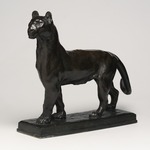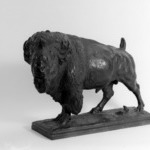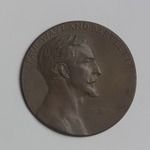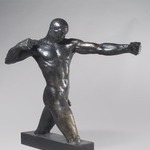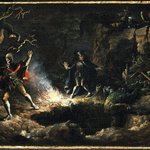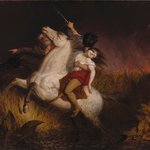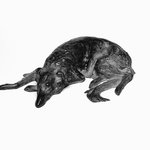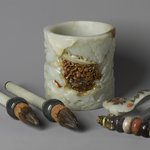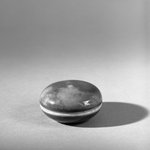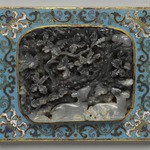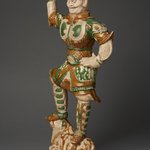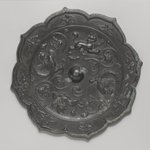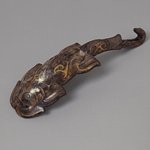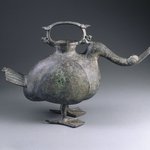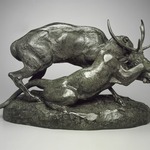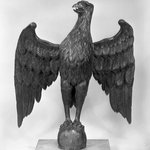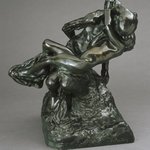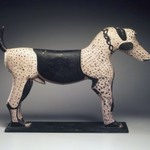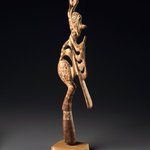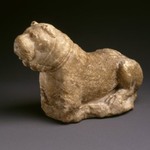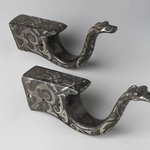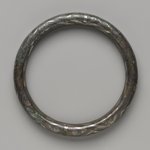
Socketed Tube Coupler
Asian Art
On View: Asian Galleries, West, 2nd floor (China)
By the Eastern Zhou dynasty, the role of bronzes had begun to change, from serving as ritual vessels to becoming luxury goods that demonstrated the wealth and power of the family who commissioned them. This is reflected in the increased use of gold and silver inlay in bronze objects and in the more abstract geometric pattern of the taotie mask, as can be seen on this pair of crossbow mounts and socketed tube coupler.
MEDIUM
Bronze, inlaid with silver
DATES
770–256 B.C.E.
DYNASTY
Eastern Zhou Dynasty
PERIOD
Late Eastern Zhou Dynasty
DIMENSIONS
a & b: 7 5/16 × 1 3/4 × 2 1/2 in. (18.6 × 4.4 × 6.4 cm) (show scale)



COLLECTIONS
Asian Art
ACCESSION NUMBER
77.54.1a-b
CREDIT LINE
Gift of Mr. and Mrs. Alastair B. Martin, the Guennol Collection
CATALOGUE DESCRIPTION
Socketed tube coupler with beading at contiguous ends. Holes for securing pins. Reddish brown bronze inlaid with silver. Inlay design based on geometric patterns emphasizing volutes. Inlay technique of silver used in sheets cut to pattern and in threads. Lower beading connected with a tiger applied in relief; the animal head is used to open the gate and then to lock the coupler. The representational modeling of this tiger is probably the finest of the type yet known.
Condition: Generally good, one end of a coupler is cracked. Cleaned by Joseph Ternback, Forest Hills NY
MUSEUM LOCATION
This item is on view in Asian Galleries, West, 2nd floor (China)
CAPTION
Socketed Tube Coupler, 770–256 B.C.E. Bronze, inlaid with silver, a & b: 7 5/16 × 1 3/4 × 2 1/2 in. (18.6 × 4.4 × 6.4 cm). Brooklyn Museum, Gift of Mr. and Mrs. Alastair B. Martin, the Guennol Collection, 77.54.1a-b. Creative Commons-BY (Photo: Brooklyn Museum, 77.54.1a-b_SL1.jpg)
IMAGE
overall, 77.54.1a-b_SL1.jpg. Brooklyn Museum photograph
"CUR" at the beginning of an image file name means that the image was created by a curatorial staff member. These study images may be digital point-and-shoot photographs, when we don\'t yet have high-quality studio photography, or they may be scans of older negatives, slides, or photographic prints, providing historical documentation of the object.
RIGHTS STATEMENT
Creative Commons-BY
You may download and use Brooklyn Museum images of this three-dimensional work in accordance with a Creative Commons license. Fair use, as understood under the United States Copyright Act, may also apply.
Please include caption information from this page and credit the Brooklyn Museum. If you need a high resolution file, please fill out our online application form (charges apply).
For further information about copyright, we recommend resources at the United States Library of Congress, Cornell University, Copyright and Cultural Institutions: Guidelines for U.S. Libraries, Archives, and Museums, and Copyright Watch.
For more information about the Museum's rights project, including how rights types are assigned, please see our blog posts on copyright.
If you have any information regarding this work and rights to it, please contact copyright@brooklynmuseum.org.
RECORD COMPLETENESS
Not every record you will find here is complete. More information is available for some works than for others, and some entries have been updated more recently. Records are frequently reviewed and revised, and we welcome any additional information you might have.

